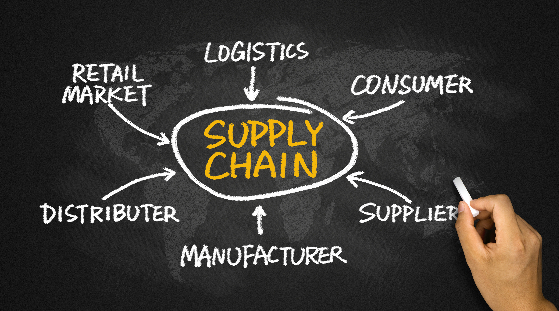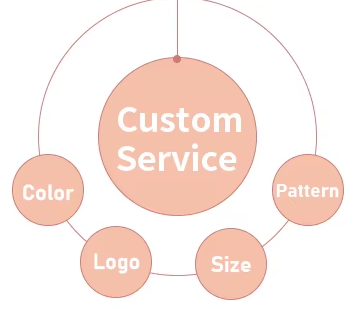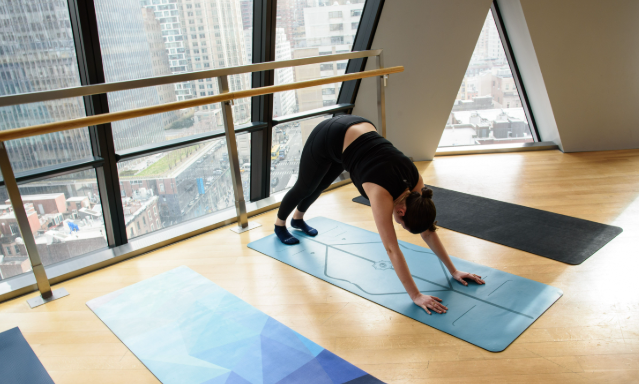I’ve seen a lot of new wellness brands jump into custom yoga mats. Maybe you’re wondering why. I think it’s because it’s a business you can start with lower costs. It also gives your brand a genuine opportunity to shine. If that’s what you’re thinking, you’re not alone. In my experience, custom yoga mats are a great way to put your brand in front of people daily. However, I’ve noticed many people forget one crucial detail. I really think this detail determines if your launch will succeed. Many beginners, I’ve observed, don’t pay attention to it.

I Suggest Setting Clear Goals Before You Start
If you’re launching a custom logo yoga mat business, I find setting clear goals at the beginning is vital. From my experience, here are some key areas you should focus on:

Define Your Brand Identity
My first piece of advice is to decide on your brand’s personality. Think about how you want people to see your brand. For example, do you want to be known for being kind to the environment, for offering luxury, for a simple style, or something different? I’ve found that this core identity will directly influence your design choices. It will also guide your marketing plans and how you connect with your customers.
Decide Your Main Goal
Next, I think it’s important to identify what you really want to achieve. For instance, are you trying to make more people aware of your brand? Is making a profit your top priority? Or perhaps you want to serve a special group of customers? I believe that when you are very clear about what you’re aiming for, it helps focus your work. It also makes it easier to track your progress and know if you are successful.
Identify Customer Pain Points
Finally, I recommend you understand the challenges or desires your customers have. What are they truly looking for? Maybe they want one-of-a-kind designs. Perhaps they prefer options that are good for our planet, or they might need very durable, high-quality materials. For example, a customer might struggle to find a mat that’s both eco-conscious and stylish. If you can solve such problems or fulfill these strong desires, I believe your products will truly connect with your target audience. This approach will help your brand shine and be distinct from what competitors offer.
My Guide to Budget Planning for Your First Yoga Mat Production
Planning your budget carefully is very important if you want your first production run of custom yoga mats to go well. From my experience, here are some main points I recommend you think about:

How I Suggest You Estimate a Realistic Startup Budget
It’s very important for you to set your total budget before you start making your mats. Your budget should cover what you pay to start up and what you’ll pay regularly. Based on my experience, having a clear budget helps you use your money much better. This way, you can, for example, avoid putting too much cash into just one part of the process and running short elsewhere.
Understanding Costs: One-Time vs. Ongoing
In my view, you need to see the difference between costs you pay once (we can call these upfront costs) and costs that come up again and again (ongoing costs). For example, upfront costs could be things like paying for your design, setting up molds, and buying your first batch of materials. Ongoing costs, from what I’ve seen, often include making more mats, shipping them, and your marketing efforts. I believe knowing these differences is key because it helps you plan your finances much better for the short and long term.
Design Costs, Mold Setup, Samples, and MOQs I Think You Should Know About
Design Fee: I suggest you set aside money for designing your custom logo yoga mats. How much this costs can change depending on how detailed your design is.
Mold Setup: From my experience, creating molds for your designs can be quite costly. So, I definitely recommend you include this in your budget. Make sure you get clear quotes for this.
Samples: I strongly suggest you order samples before you do a full production run. This way, you can check the quality and ensure the mats are exactly what your brand needs. It’s a small cost that can save you a lot later.
Minimum Order Quantities (MOQs): Most custom yoga mat manufacturers have MOQs. These often range from 50 to 200 mats. I advise you to be ready for this, as it directly influences how much money you’ll need to invest right at the start. Factoring this in properly is really important for your initial cash flow.
My Tips for Keeping Costs Down Without Losing Quality
- Talk to Your Suppliers: I recommend building good relationships with your yoga mat suppliers. This can often help you get better prices for materials, or maybe even better payment terms.
- Choose Earth-Friendly Materials with Care: In my opinion, selecting materials that are good for the environment is a thoughtful move. While these options might seem more expensive at the start, I’ve found they can attract customers who value sustainability. Plus, they might even lead to savings for you in the long run, perhaps because they are more durable or appeal to a premium market.
- Try Out Different Designs: I suggest starting with fewer designs. This can help keep your initial costs low, and you can still offer choices that people will like. You can always add more designs later as your business grows.
If you pay attention to these areas I’ve mentioned, I’m confident you can create a solid budget. From my perspective, this budget will help your custom yoga mat business get off to a strong start, and you’ll be able to manage your spending well from day one.
Expert Opinion:
“Based on my experience, many new yoga mat business owners make mistakes with budget planning. In my consulting, I’ve seen many startups close. This often happens because they didn’t expect hidden costs. These costs can include quality checks, shipping hold-ups, and product storage. I share this key piece of advice: Your first production run will likely cost 30-40% more than your first estimate. I recommend smart business owners add this extra amount in their plans from the start.“
———— Sarah Chen , Wellness Industry Consultant and Former Product Manager at Lululemon
Customization: I Recommend Starting Simple, Then Scaling
If you’re looking at custom yoga mats, I think it’s smart to begin with a few basic choices. This approach helps keep your first costs down, and you can still offer special products.
What I Suggest Customizing at First
I believe simple customizations can build a strong base for your brand. Here are a few important features I’d consider:
- Logo: Put your brand logo clearly on the mats. This helps people recognize your brand. It also builds loyalty because customers see your logo often when they use the mat.
- Mat Color: I find that offering several colors attracts more people. Customers usually like to pick colors that show their personal style.
- Basic Packaging: From my experience, packaging is very important. Good packaging shows your brand’s personality. It also makes opening the package a better experience for your customers.
Optional Features I Recommend Adding Later
Once your business starts doing well and you get more customer orders, I suggest adding more custom features. This can make your brand stand out even more:
- Laser-Etched Patterns: You can add unique designs with laser etching. I think this makes the mats look great and gives them a premium feel, like something special.
- Carry Straps: I recommend including handy carry straps. These make your mats easier to use. Customers who are always on the move will appreciate this feature.
- Embossed Branding: This technique adds a texture to your mats that people can feel. It makes your product more unique. Your brand will also be more noticeable.
How I Suggest You Find the Right Manufacturing Partner
If you’re starting a custom yoga mat business, I think finding a good manufacturing partner is very important. A solid partner helps you make quality products and keeps your costs under control. Based on my experience, here are some key things I recommend you look at:

First, Know What You Need
Before you start looking, I suggest you get clear on your needs. Think about what the factory should be able to do, where they get materials, and the smallest order size (MOQ) you can work with. From my experience, understanding these points helps you explain your needs well to potential partners.
Next, I Advise You to Research Partners
I recommend starting your research online. Look for factories that make yoga mats or items like them. You can use sites like Alibaba or go to trade shows to find good manufacturers. I also suggest you check their reviews and what other people say about them.
Some Red Flags I’ve Seen with Overseas Factories
In my experience, these are things you should watch out for:
– Poor Communication: If a factory has trouble explaining things or isn’t easy to understand, you might run into problems later.
– Not Being Open: I’d be careful with partners who are not clear about their costs or how they work. They might not be looking out for you.
– Bad Reviews: If you see many people complaining about poor quality or late deliveries, I’d take that seriously.
My Recommended Steps for Checking Them Out:
Here’s what I suggest you do to check potential partners:
1. Ask About Certifications: Make sure the factory follows industry rules. I find that certifications show they care about quality.
2. Look at Their Past Work: I always recommend looking at product samples or examples of their work. This gives you an idea of their skills and the quality they produce.
3. Get a Trial Sample: Before you order a lot, ask for a sample of your custom yoga mat. This is important so you can check if the mat is good in quality, strong enough, and looks how you want.
My Communication Tips for New Entrepreneurs
Here’s some advice on how I think you should talk to them:
– Be Straightforward: Explain what you need and what you expect in a simple way.
– Keep in Touch: I suggest you check in often to keep the conversation going. This helps build a good working relationship.
– Ask Your Questions: If there’s anything you’re not sure about, just ask. I believe this shows you’re serious and helps everyone understand each other.
Launch Strategy for Your First Product
A strong launch strategy is key for your custom yoga mats to succeed. I suggest this plan includes different parts. These parts should help more people see your product and get them excited about it.
Build Anticipation Before Launch: Waitlists, Sneak Peeks
I think creating buzz before your launch is very important. I recommend you set up a waitlist. Interested customers can sign up there. I find this helps build a community. It also keeps potential customers interested. You can also give sneak peeks of your mats. I suggest using social media or your website for this. If you share posts or short videos of how you design the mats, I believe this can make people excited and look forward to your brand.
Collaborate with Micro-Influencers or Yoga Instructors
Working with micro-influencers and yoga instructors. In my experience, their support can boost your launch. These people often have loyal followers. They can endorse your mats in a way that feels genuine. Based on my experience, a simple partnership works well. For example, offer them free mats. In return, they can give reviews or make social media posts. This approach can expand your product’s reach. It raises awareness and also adds trust to your brand.
Use Customer Feedback to Improve Future Batches
Listening to your customers is crucial for long-term success. After your first launch, I recommend you ask for feedback. You could send out surveys. Or, you can ask your first customers for reviews. When you understand what they experienced, it will help you see what’s good and what you can make better. What you learn from them can help you make changes for future batches. This way, your mats will better meet what customers expect and like.
summary
I feel starting a custom yoga mat business is not simply about making products. For me, it’s about creating something special. I think this can become a valued part of people’s journey to well-being. Based on my experience, if you follow these steps with care and always focus on your customers’ needs, you’ll create much more than just mats. I strongly suggest you can build a brand that makes a genuine difference in people’s lives.

